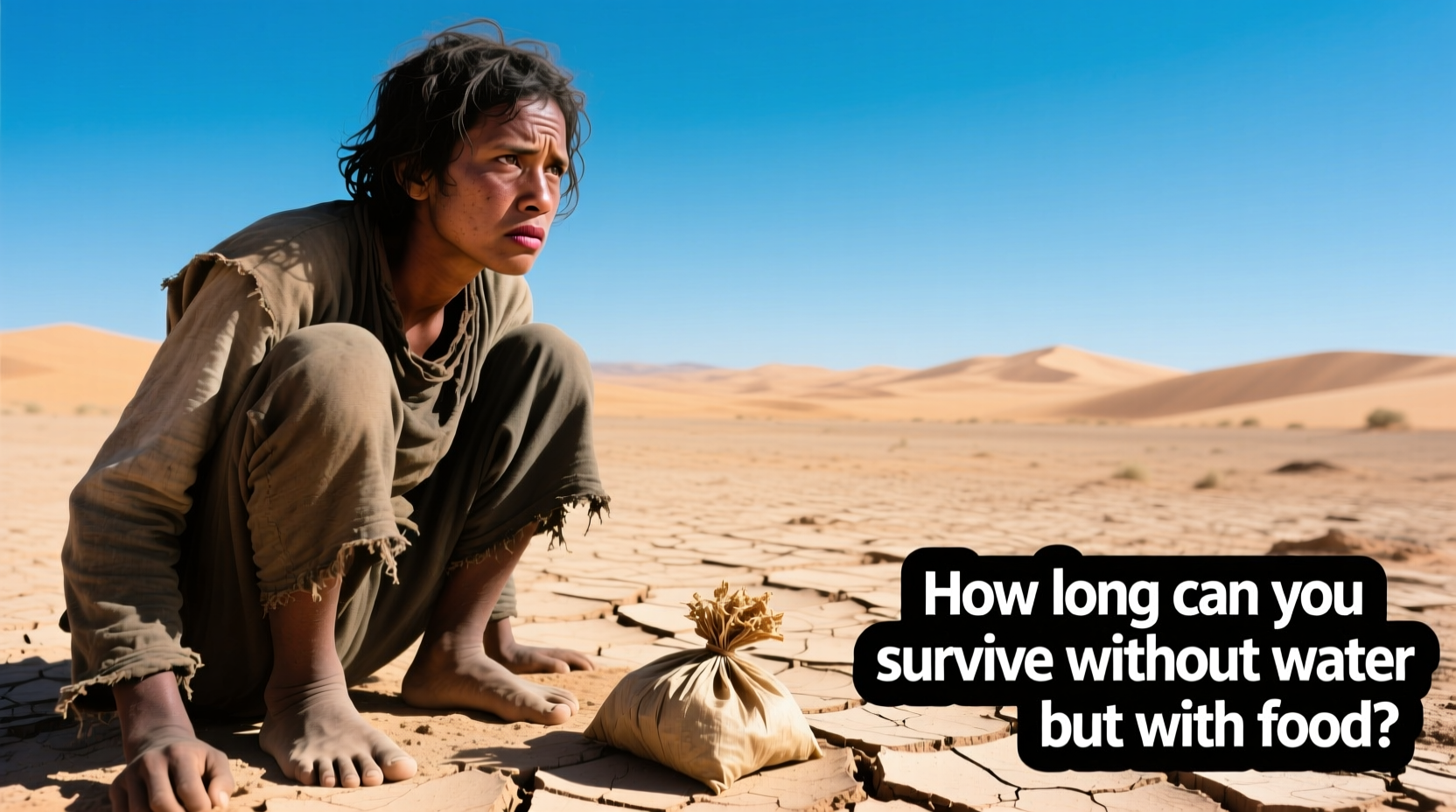The Science Behind Survival Without Water
When you consume food without adequate water, your body faces a physiological paradox. Digestion requires significant water resources - approximately 1-2 liters daily just for basic metabolic processes. The human body is 60% water, and maintaining this balance is essential for temperature regulation, nutrient transport, and waste elimination.
Food consumption triggers increased water demands through several mechanisms:
- Digestion requires water to break down food particles
- Metabolizing proteins produces nitrogenous waste that needs water for elimination
- Carbohydrates and fats also require water for complete metabolism
- Food stimulates gastrointestinal secretions that deplete fluid reserves
Key Factors Affecting Survival Timeframe
Your actual survival duration without water depends on multiple variables working in combination. Understanding these factors could be life-saving in emergency situations.
| Factor | Shortens Survival Time | Extends Survival Time |
|---|---|---|
| Temperature | Hot environments (above 85°F/29°C) | Cool environments (60-70°F/15-21°C) |
| Physical Activity | High exertion (hiking, running) | Complete rest, minimal movement |
| Food Type | Protein-rich foods (meat, cheese) | Fruit with high water content (watermelon) |
| Individual Factors | Pre-existing health conditions | Excellent baseline hydration |
Progression of Dehydration: What Happens Hour by Hour
Understanding the timeline of dehydration can help recognize dangerous situations before they become critical. The progression varies by individual, but generally follows this pattern:

First 24 Hours
Initial symptoms include increased thirst, dry mouth, and reduced urine output. Your body begins conserving water by reducing sweat production. Cognitive function remains relatively normal, though concentration may slightly decrease.
Days 2-3
Significant symptoms emerge: dark yellow urine, headache, dizziness, and muscle cramps. Your blood volume decreases, forcing your heart to work harder. Mental clarity diminishes, and decision-making becomes impaired. This is when most people reach their absolute limit without water, even with food consumption.
Day 4 and Beyond
Severe dehydration sets in with symptoms including rapid heartbeat, sunken eyes, minimal urine output, confusion, and eventually organ failure. Kidney function begins to deteriorate as the body cannot properly filter waste without sufficient water.
Critical Context Boundaries: When the General Rule Doesn't Apply
The standard 3-5 day survival window has important exceptions based on specific circumstances. According to research published by the Centers for Disease Control and Prevention, extreme environmental factors can dramatically alter survival timelines:
- High altitude environments increase water loss through respiration, potentially reducing survival time by 25-30%
- Desert conditions with temperatures above 100°F (38°C) can cut survival time to just 2-3 days
- Cold environments below freezing may extend survival slightly (up to 6 days) due to reduced sweating
- Children and elderly have significantly shorter survival windows due to less efficient temperature regulation
Practical Survival Strategies When Water Is Limited
If you find yourself in a situation with limited water but available food, these evidence-based strategies can help extend your survival time:
Food Selection Matters
Choose foods that minimize additional water requirements:
- Prioritize carbohydrates over proteins (proteins require more water for metabolism)
- Select foods with natural water content like fruits and vegetables
- Avoid salty or processed foods that increase thirst
- Consume smaller, more frequent portions rather than large meals
Water Conservation Techniques
Implement these methods to preserve your existing hydration:
- Stay in shade and limit physical activity during peak heat hours
- Breathe through your nose to reduce respiratory water loss
- Avoid alcohol and caffeine which increase dehydration
- Use minimal water for cooking by opting for raw foods when possible
Recognizing Dangerous Dehydration: When to Take Action
Knowing the progression of dehydration symptoms can help you make critical decisions before reaching a medical emergency. The Mayo Clinic identifies these key warning signs:
- Mild dehydration: Thirst, dry mouth, reduced urine output
- Moderate dehydration: Dark urine, headache, dizziness, muscle cramps
- Severe dehydration: Rapid heartbeat, confusion, minimal urine, sunken eyes
At the first signs of moderate dehydration, stop consuming dry foods and focus on conserving your remaining water. Severe dehydration requires immediate medical attention, as rehydration must be carefully managed to avoid complications.
Recovery After Rehydration: Important Considerations
Surviving several days without water requires careful recovery. Medical professionals at the UK National Health Service emphasize that rapid rehydration can cause dangerous electrolyte imbalances. The proper approach includes:
- Start with small sips of water rather than large quantities
- Include electrolytes in your rehydration solution
- Avoid consuming large meals immediately after rehydration
- Monitor for symptoms of refeeding syndrome if you've gone without food as well
- Seek medical evaluation if you've been without water for more than 72 hours











 浙公网安备
33010002000092号
浙公网安备
33010002000092号 浙B2-20120091-4
浙B2-20120091-4